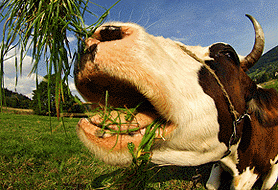
By Jeff Smith
The meat industry needs to stop chewing the fat.
The hopes and fears farmers in the red meat sector are not being assuaged by the endless talkfests going on around the country.
Farmers can clearly see time is not on their side and it is time for action. The calls for progress grow louder and increasingly appeals are being made for the Government to step in.
It is a similar situation to that which dairy farmers found themselves in the late 1990s. Moves to solve their woes lead to the formation of Fonterra. Here the Government played a pivotal role and there is growing sentiment for it to do the same again for the red meat industry.
There has been a call from foundation Fonterra chairman Henry van der Heyden to look at such a model “as time is running out”.
“A decade ago, our sheep and dairy farmers were in about the same relative position receiving a price that was about half of that received by farmers in the UK. Today our dairy farmers are looking at slightly more return than their British counterparts,” he said.
By contrast a Kiwi farmer receives a little over 60% of what a UK farmer gets.
Van der Heyden said the parallels were clear between the deadlock blocking the red meat sector from achieving its potential and the challenges faced by dairy farmers before the founding of Fonterra. He did not pretend it had been easy then as farmers were loyal to their own co-ops much as they are now.
The turning point was when the chairmen of the co-ops put their differences aside. It is something that would have to happen with red meat as well.
The farmers all agree the sector badly needs reform and that staying the same is not an option. The core of the debate is how to restore value as well as halt the inexorable slide to converting traditional stock farms to dairy.
Farmers have invested in the red meat sector strategy document and the pressure is mounting for a return on that money. Fixing things on farm is achievable but only worth it if things can be fixed beyond the farm gate Reform has been described by the bank with the biggest rural customer base (ANZ) as “painfully slow”.
Death by a thousand cuts
In its latest Agr-Focus, ANZ says the talk had not been matched by action “and it feels like death by a thousand cuts”. The red meat sector still covers almost 80% of New Zealand’s total agricultural land.
“There is an opportunity to close the performance gap between the top 20% the rest,” the bank said.
The recently announced red meat profit partnership was the first major step-up investment and represented the first opportunity [$64m over seven years] to address this issue. The meat processors lost some $200 million between them in 2011-12 and only just broke even in 2012-13.
Addressing over capacity, especially for sheep meat, and better alignment between farmers and processors, was critical to addressing poor profitability, creating greater supply chain efficiencies and ensuring farmers captured their fair share of the retail value. ANZ says while there are suggestions change is getting closer “what type of change remains to be seen”.
Ground breaking
Whilst acknowledging progress had been slow, retiring chairman of Beef +Lamb Mike Peterson said what was about to happen was ground-breaking for farmers.
“It was really tough having to wait 12 months to get the contract signed off with the Crown, but we are now looking at a game changer.”
Beef+Lamb was there to help and there was still support from the Government, a couple of major banks, a rural business along with most of the meat industry. The primary growth partnership would spend $65 million over seven years and farmers were still waiting on $19.5 million from meat board reserves.
Peterson said farmers should look at the partnership scheme as a round of capital development for their farm.
A capital injection allowing us to make a big jump ahead.”
1 Comments
The best thing to happen would be for land prices to collapse and young enthusiastic farmers to jump on board.
Banks not so enthusiastic about the idea, so exclaim " look over there is the problem", followed by some marketing jargon like,
better alignment between farmers and processors, was critical to addressing poor profitability, creating greater supply chain efficiencies and ensuring farmers captured their fair share of the retail value. ANZ says while there are suggestions change is getting closer “what type of change remains to be seen”.
When all thats needed is to address costs both on farm and in the processing industry. Its simple really but never talked about. Just around and around in ever smaller circles.
We welcome your comments below. If you are not already registered, please register to comment.
Remember we welcome robust, respectful and insightful debate. We don't welcome abusive or defamatory comments and will de-register those repeatedly making such comments. Our current comment policy is here.